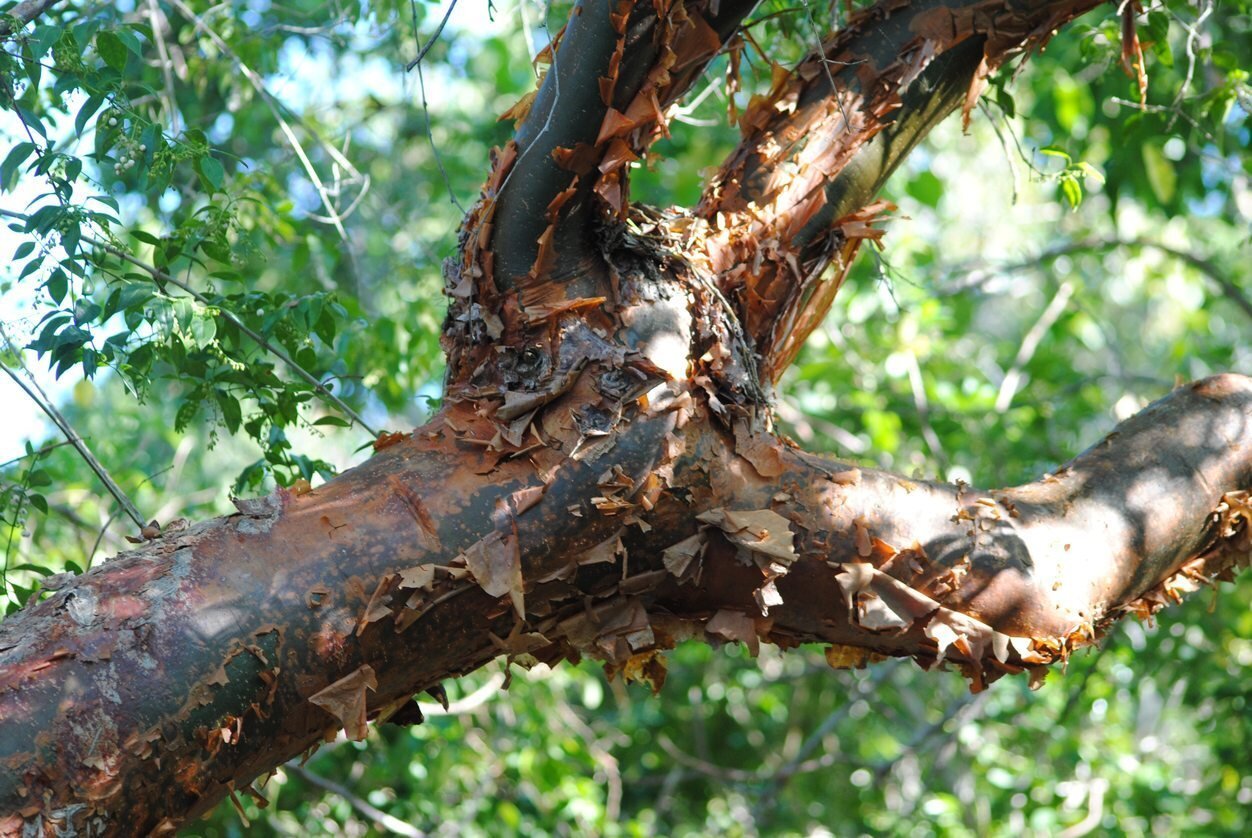
Tourist Tree.
Gumbo-Limbo Tree.
The Gumbo-limbo Tree (Bursera Simaruba)is a medium-sized tree growing to 30 meters tall or approximately 100 feet. The bark is one of its differentiators as it is shiny dark red and peals of rather easily. One of the most common sites on Roatan is the Gumbo-Limbo Tree, casually known as the Gumbalimba Tree
Tourist Tree.
PRO TIP: The tree is jokingly referred to as the "tourist" tree because the bark of the tree is comprised of red peeling skin, as in the pealing skin of tourist when they have taken on too much sun. On the mainland, the tree is referred to as "Indio Desnudo" which translates to Spanish as "Naked Indian."
Wind-Tolerant.
Hurricane Resistent
30 meters tall
Soil Types
The Gumbalimba is one of the most wind-tolerant trees, and it is often recommended as a tough, hurricane-resistant species throughout the Caribbean. The tree may be planted as wind protection for crops or as living fences along property lines.
Gumbo-limbo wood is adequate for light construction as the wood is rather brittle, though the trunk is used throughout Honduras to make artifacts or as firewood. The tree's resin, called cachibou, chibou, or gomartis, is used as glue, incense, and varnish.
Ecological & Economical
Fast Growing
Reforestation
Habitat
The Gumbo-limbo is a useful tree both economically and ecologically. The tree grows rapidly and adapts well to several habitats & ecosystems. For instance, the Gumbo-limbo adapts well well in salty and calcareous soils. The tree does not adapt well to boggy soils. Roatan provides an excellent habitat for the growth of the Gumbalimba Tree.
The gumbo-limbo tree is often used as a starter tree in reforestation efforts because it is fast growing and it has a low cost of propagation.
Yearly Fruit
Ripe Fruit
Characteristics
Bird Feeder
The tree produces ripe fruit year-round. The main fruiting season is in March and in April. The fruit is a three-valved capsule which encases a single seed. The seed is covered in red fatty seedcoat (aril) of approx. 6 mm in diameter. The fruit is borne loosely on the stems and can spontaneously detach regardless of how ripe or green the fruit may be. Ripe capsules are cracked open by both land and seabirds all around the island or Roatan because the fruit is rich in lipids.
The arils are the main food source for local birds. Many migrant birds will feed off of gumbo-limbo trees even if they are in human-modified habitats. This is seen in Roatan where exotic birds are often found nesting or feeding on these trees.
